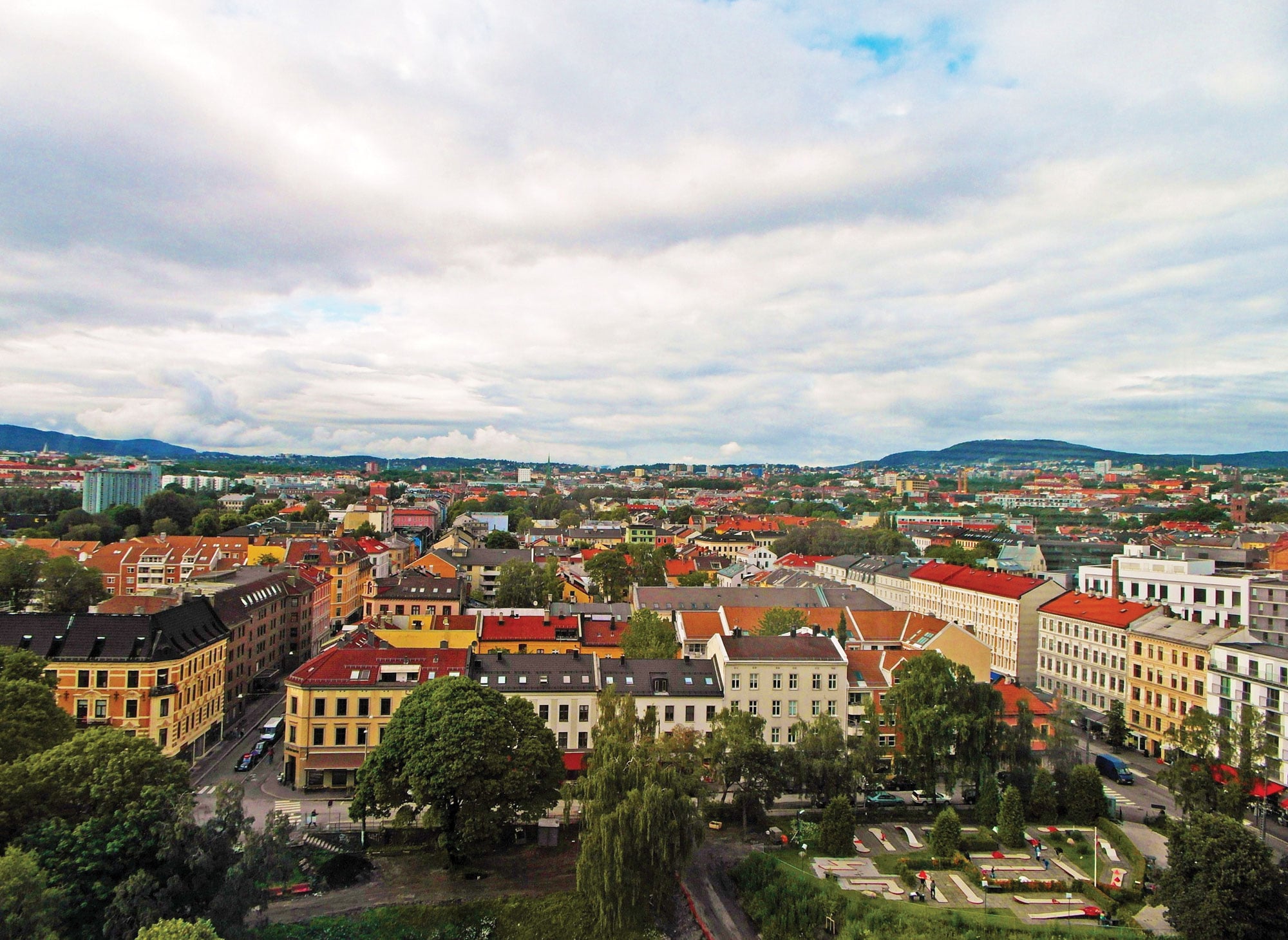
[Photo: Tord Baklund for #VISITOSLO]
Norway’s capital is undeniably one of the greenest cities in the world—both literally verdant, with protected forest and plentiful parks, as well as being a hotbed of sustainable initiatives. Fewer parking spaces, more electric charging stations, municipal buses that run on biofuel, widespread car-sharing, and countless bicyclists and pedestrians are evidence of the thinking here, as all seem to ask, “How can we be even greener?”
The business of green building is booming in Oslo, too, as 10,000 people move to the city each year and more developers and architects pursue sustainable construction to accommodate them. Eco-friendly initiatives are on the rise—requirements like the one that mandates all new municipality-built buildings be “energy-plus-houses.” It’s no longer enough to be zero-emission; these structures must also generate energy.
“We want to have a green city that’s literally green—parks, rivers, trails, everything,” says Rasmus Reinvang, a political advisor with the Green Party. This past year, the party became the third largest in Oslo—a feat Reinvang calls a revolution. “That was a testament to the fact that a lot of people want an even more ambitious environmental agenda.”
The Green Party is among those working to make Oslo climate-neutral by 2030. The city is tracking emissions as well as making sure the municipal pension fund invests in green projects, not fossil fuel–based projects, Reinvang says. Oslo also aims to have a car-free city center by 2030. “The goal is to make it a more beautiful, healthy, nice city where people can thrive and where space is prioritized for people, not for machines.” Because Oslo is smaller than many European capitals (roughly 660,000 people live in the municipality), more experimentation is possible as well, Reinvang says. For example, the city uses programs like FutureBuilt, a 10-year program we also wrote about here, to identify sustainable pilot projects in an effort to develop carbon neutral urban areas and impressive architecture. The program’s goal of 50 completed pilot projects by 2020 will likely be exceeded soon, as the number surpassed 40 in spring 2017.
“We want to have a green city that’s literally green—parks, rivers, trails, everything.”
The city is already doing a lot to show its true colors. It’s home to what’s being called “the world’s greenest airport terminal” after a massive renovation and addition was revealed in early 2017, complete with living walls and abundant natural light. The airport is the first to receive the BREEAM Excellence in sustainability rating. The city offers incentives like tax credits, access to public transport lanes, and waived tolls to anyone driving electric cars, plus credits for electric transport bicycles.
Efforts like these and the already dramatic transformations of former industrial neighborhoods like Grünerløkka, which we also covered here, are just some examples of what can be done in Norway. Reinvang says he saw a real shift in Oslo in 2008, after the Oslo Opera House was finished. He says the building is not only beautiful; it’s made of high-quality materials with illusions to icebergs and is a symbol of democracy. “It’s an opera house, but everybody can go there.” In the years before, he says Oslo had a bit of small town mentality, but that’s changed. “When the Opera House was built—and it was designed by Norwegian, Oslo-based Snøhetta—people were like, ‘Oh. We can do nice things. We can be something.’ Maybe we’re not as old as cities like Amsterdam, but we can make great new buildings.”
